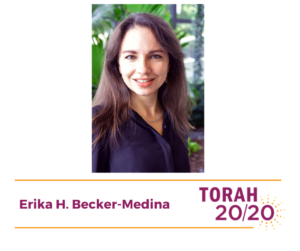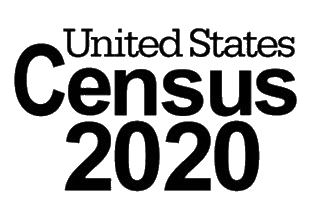A d’var Torah for Parshat Naso.
“The Eternal one spoke to Moses: Take a census.” This week’s Torah portion, Naso, focuses on one of the multiple censuses that was carried out, the census of the Levites in the desert. This year in the U.S. is our year to carry out the census — to be counted. The Census Bureau’s goal is to count everyone once, only once, and in the right place. The Koathites, Gershonites, and Merarites were only counted if they were between the ages of 30 and 50 — the age “subject to service in the performance of the duties for the Tent of Meeting” (Num. 4:30). Through our participation in the 2020 Census, each of us (regardless of age) provides a service. Our service, so to speak, is contributing to our community’s once-in-a-decade count.
Our communities need a complete and accurate population count to receive their fair share of public funding. Everyone in this country, regardless of their place of birth, race, or ethnicity, is part of a community that relies on publicly funded services — especially now. When communities are undercounted, they are in turn, underfunded for many essential services over the next ten years (until the next census). This is why participating in the 2020 Census is such a vital part of helping our community. Our communities need us to participate and be counted in order to receive adequate funding for hospitals, emergency services, educational resources, roads, and so much more.
Sign up to receive Torah 20/20 in your inbox each week.
As I reflected upon this week’s Torah portion, I couldn’t help but think of the different tribes being counted all in the same way. It stood out to me because we at the Census Bureau designed the 2020 Census to ensure everyone could participate by offering different ways of being counted: online, by phone, and by mail. It has never been easier to participate in the census precisely because there are multiple response options to choose from. We anticipated some potential obstacles from the beginning. Not every community has the same level of access to the internet nor does everyone have the same proclivity to respond online. So, we made sure we maintained a paper option as well as added a phone response option in multiple languages.
Nevertheless, Naso is not just about taking a census. It is also about the results of the count, in this case the equal distribution of offerings. Each chieftain presented offerings for the dedication of the altar: From “one silver bowl weighing 130 shekels” all the way through “five yearling lambs,” each chieftain offered the same amount (Num. 7:10-83). While we are not presenting offerings through our census, the census is very much about distribution. This distribution is vital to our democracy. Each individual is part of a population count that ultimately determines the distribution of congressional seats across these fifty states.
Census Day, the reference day used to count who lives in the United States, is April 1. It was just one week before the first night of Passover this year and a number of things were taking place at once: the start of the national 2020 Census count, a scary pandemic, and for many of us — a different kind of Seder. Even though it was my first Seder without my father, (he’s alive and well but we were self-quarantining) I couldn’t help but reflect on his favorite part of our family’s Haggadah, which happens to be my favorite part too. “You shall not oppress a stranger, for you know the feelings of the stranger, having yourselves been strangers in the Land of Egypt.” (Ex. 23:9)
Find more commentaries on Parshat Naso.
The notion of welcoming the stranger is a common thread throughout the Torah. “When strangers reside with you in your land, you shall not wrong them. The strangers who reside with you shall be to you as your own citizens” (Lev. 19:33-34). The “stranger” is also an integral part of our nation’s census count — they count.
We hope to count everyone by reaching more than 99% of all U.S. households and allowing people to respond in one of 13 languages online and over the phone. These same languages are also used in our advertising campaign, which has a heavy focus on encouraging participation among multicultural and historically undercounted communities.
The Census endeavors to count everyone by making it easy and accessible for everyone to participate — including the stranger.
Erika Becker-Medina is chief of the Decennial Communications Coordination Office of the U.S. Census Bureau, where she oversees the development of multiple communication materials in an effort to increase collaboration with stakeholders as well as increase participation in the 2020 Census. Prior to this role, Erika oversaw the outreach efforts of the Economic Census, the Census of Governments, and a host of annual and quarterly data products about the U.S. economy. Before managing these outreach efforts, Erika managed multiple surveys covering state and local governments data, specializing primarily in public pensions.

